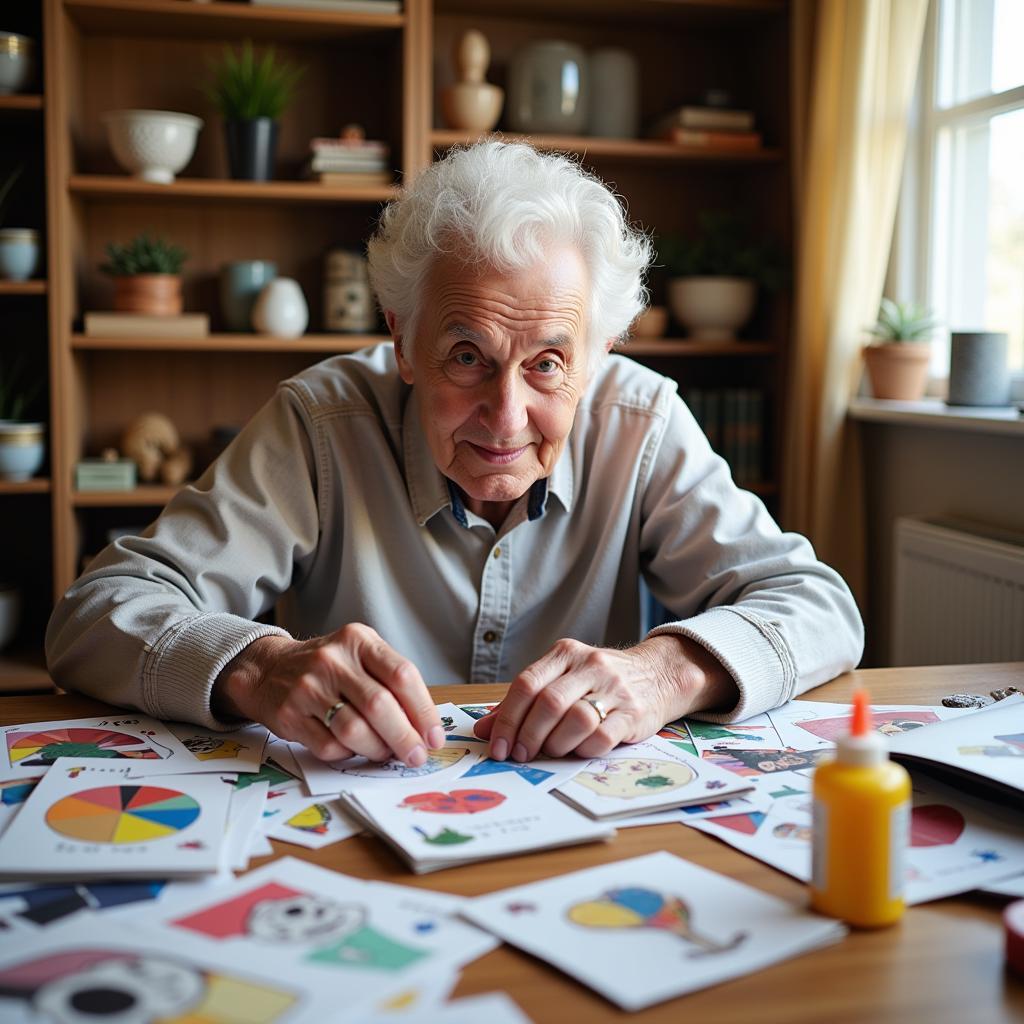Engaging Art Projects for Seniors with Dementia
Art can be a powerful tool for enriching the lives of seniors with dementia. Engaging in creative activities can stimulate cognitive function, encourage self-expression, and foster a sense of accomplishment. Whether your loved one is in the early stages of memory loss or experiencing more advanced dementia, there are a variety of art projects that can be adapted to their abilities and interests.
The Benefits of Art for Seniors with Dementia
Participating in art projects offers numerous benefits for seniors with dementia, including:
- Cognitive Stimulation: The act of creating art engages various parts of the brain, helping to maintain cognitive skills and potentially slow down cognitive decline.
- Emotional Expression: Art provides a nonverbal outlet for emotions, which can be particularly helpful for individuals who may struggle to express themselves verbally.
- Social Interaction: Group art activities can foster social connections and reduce feelings of isolation, which are common among seniors with dementia.
- Improved Mood and Self-Esteem: Completing an art project, regardless of the outcome, can provide a sense of accomplishment, boost self-esteem, and enhance mood.
- Reduced Agitation and Restlessness: Focusing on a creative task can be calming and therapeutic, helping to reduce anxiety and agitation.
Choosing the Right Art Projects
When selecting Art Projects For Seniors With Dementia, it’s important to consider their:
- Cognitive Abilities: Choose projects that align with their current level of cognitive function. Simple projects with few steps are best for those in the later stages of dementia.
- Physical Abilities: Consider any physical limitations they may have, such as dexterity or vision impairment. Adapt materials and tools as needed.
- Interests and Preferences: Incorporate their past hobbies, interests, or favorite colors and themes into the projects to make them more engaging.
Simple and Engaging Art Projects for Seniors with Dementia
Here are some easy-to-implement art projects that are well-suited for seniors with dementia:
1. Sensory Art with Textures and Colors
- Materials: Textured fabrics, sponges, paintbrushes, non-toxic paints, large sheets of paper
- Instructions: Encourage participants to explore different textures and colors by dipping the materials in paint and applying them to the paper. There are no right or wrong ways to create with this open-ended activity.
Expert Insight: “Sensory art can be particularly beneficial for individuals with dementia, as it stimulates multiple senses and promotes relaxation,” says Dr. Sarah Thompson, a geriatric psychologist specializing in art therapy.
2. Collage Creations with Familiar Images
- Materials: Old magazines, newspapers, family photos (copies), scissors, glue sticks, construction paper
- Instructions: Guide participants in cutting out familiar images or themes and gluing them onto the construction paper to create personalized collages.
 creating collages with familiar images
creating collages with familiar images
3. Music and Movement Art
- Materials: Music player, upbeat music, large sheets of paper taped to the floor, non-toxic paints, paintbrushes, sponges
- Instructions: Play music and encourage participants to move freely to the rhythm while making marks on the paper with the paint.
Expert Tip: “Music can be a powerful tool for evoking memories and emotions. Incorporating music into art activities can enhance engagement and provide a sense of joy,” suggests art therapist Emily Chen.
Creating a Positive and Supportive Environment
The environment in which you conduct art activities is just as important as the projects themselves.
- Choose a Well-Lit and Comfortable Space: Ensure adequate lighting and comfortable seating to create a welcoming atmosphere.
- Provide Clear and Simple Instructions: Break down instructions into smaller, manageable steps and use visual cues when possible.
- Offer Encouragement and Positive Reinforcement: Focus on the process and the joy of creating, rather than the end result. Celebrate their efforts and accomplishments.
- Be Patient and Flexible: Be prepared to adapt activities as needed and allow participants to work at their own pace.
Conclusion
Engaging in art projects can bring joy, purpose, and a sense of accomplishment to seniors with dementia. By providing opportunities for creative expression, we can enrich their lives, stimulate their minds, and foster a sense of connection. Remember to choose projects that are tailored to their abilities and interests, and create a positive and supportive environment where they feel comfortable exploring their creativity.
FAQs About Art Projects for Seniors with Dementia
1. Can art therapy really help someone with dementia?
Yes, while art therapy isn’t a cure for dementia, it can improve mood, reduce agitation, and provide an outlet for expression.
2. What if my loved one doesn’t think they are artistic?
It’s not about being “good” at art. The focus is on the process of creating and the enjoyment it brings.
3. Are there any safety considerations?
Always supervise the activity, use non-toxic materials, and adapt tools if needed for limited dexterity.
4. Can I find art classes specifically designed for seniors with dementia?
Yes, many senior centers and community organizations offer specialized art programs.
5. What are some other ways to incorporate creativity into their day?
Listening to music, singing, dancing, gardening, and storytelling are all wonderful creative outlets.
For personalized guidance and support in finding the perfect art projects for your loved one with dementia, contact our compassionate team at 02462573573, email us at danteum@gmail.com or visit us at Savico Megamall, 7-9 Đ. Nguyễn Văn Linh, Gia Thụy, Long Biên, Hà Nội 10000, Việt Nam. We’re here to help you navigate the journey of dementia care with creativity and compassion.


